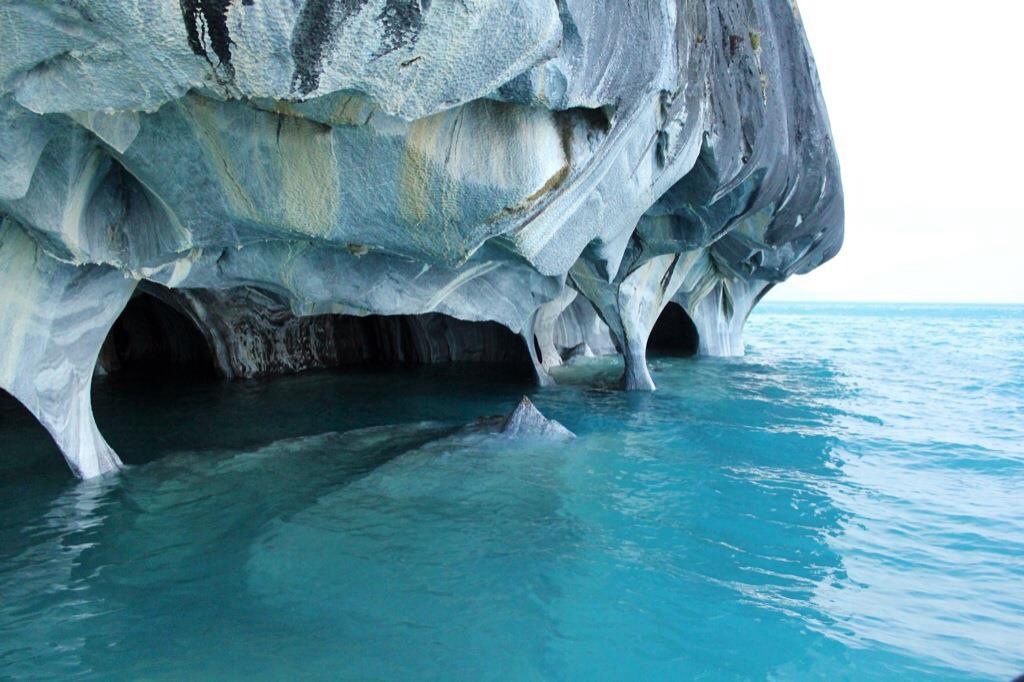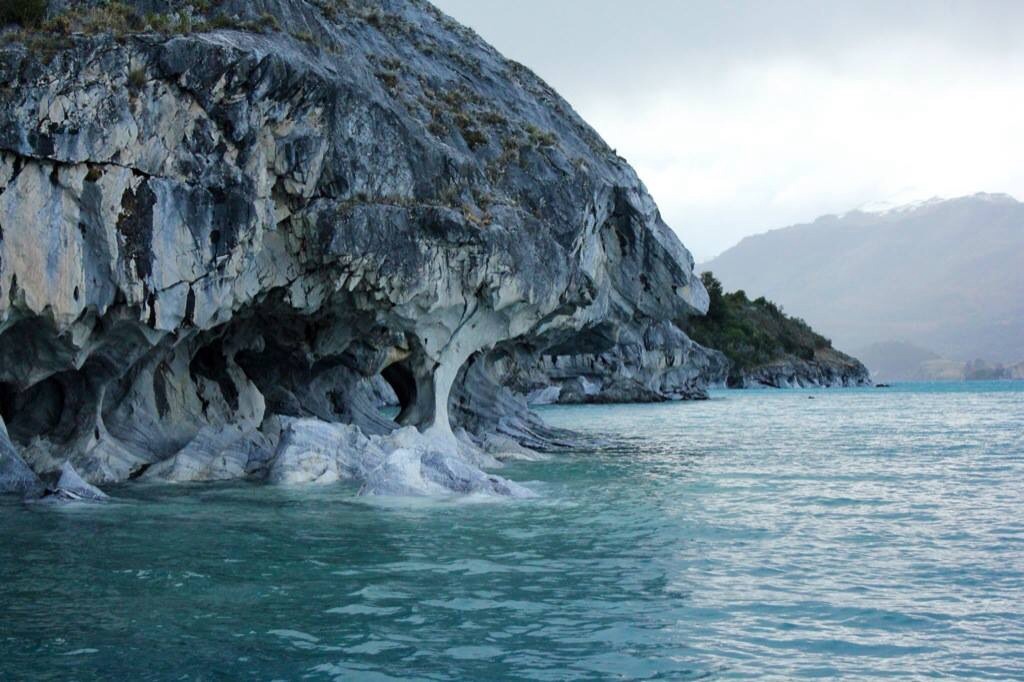
 The first thing you need to know about visiting the Marble Caves is that there are not a lot of people who have. In fact, when my husband and I were backpacking through Patagonia last summer, we had a difficult time finding anyone who had been there. This was crazy to us, since the pictures online are insanely gorgeous. We were committed to this visit, and let me tell you, it was as fun to get there as it was to be there!
The first thing you need to know about visiting the Marble Caves is that there are not a lot of people who have. In fact, when my husband and I were backpacking through Patagonia last summer, we had a difficult time finding anyone who had been there. This was crazy to us, since the pictures online are insanely gorgeous. We were committed to this visit, and let me tell you, it was as fun to get there as it was to be there!
The Marble Caves on the border of Chile and Argentina in the Patagonian mountain range are a collection of massive marble boulders that rolled into the largest lake in Patagonia thousands or millions of years ago, depending on who you ask. Over the last few millenia, that glacial lake has been working on these boulders like a five-year-old on a jawbreaker, the result a series of immense granite mushroom caps perched on their stems, a network of partially-submerged, crystalline caves beneath. You can hire a boat to navigate you through what looks like Disney Imagineer’s latest theme park creation, taking in the icy blue light refracting off the lake’s surface onto the smooth calcium carbonate ceilings above. Yes, all this is possible, if you can can just get there.
There is a backpacker circuit in Argentinian Patagonia that is book-ended by El Calafate to the south and Bariloche to the north. The distance is about 24-27 hours by bus, and Los Antiguos — the Argentinian gateway to the Marble Caves — is a near-perfect midpoint. This humble hamlet sits on the lake shore of Lago Buenos Aires, known in Chile as Lago General Carrera. Despite the caves being surrounded by water, they are technically on the Chilean end, and all the boats-for-hire dock on the northern shore (in a town unmarked on google maps), making it necessary to cross into Chile.
Upon arrival at the Los Antiguos bus station, you may be approached by taxis offering a ride directly to Chile Chico, Chile, where there are plenty of hostels, or you can book lodgings at one of the handful of hostels or refugios in Los Antiguos. There is a generously-sized tourist information office just a few blocks walking from the bus station. Note that if you are going off-season, simply showing up, which is what we did, will make visiting the Marble Caves more complicated. The town closes up shop in the off-season like an abandoned ghost town where all the dogs turn into zombies at sunset.
Whether you decide to base-camp in Los Antiguos or Chile Chico, you will need to book a ride around the lake to the northwestern shore where dock is located. There are plenty of boats in this town, and we met a few backpackers hitchiking with apparent success. After all, if you’re a traveler and you’re in this neck of the woods, the locals assume you want to see its best treasure.
Side note: Chile requires a hefty visa fee to enter the country depending on your nationality, and Argentina does as well; bring all your papers with you, even if you plan to go just for the day.
The drive from Chile Chico to the Marble Caves landing dock is about four hours. To travel the entire perimeter of the lake, including the trip out to the caves, takes a very long day at best – we returned to our hostel around 11 p.m.
Once in the boat, hunkered down for the 45-minute boat ride out to the caves, we were struck by the beauty of the lake, the glacial peaks in the distance, and the biting cold. It was fall, but even in the summer, these waters are frigid. Approaching the caves, I could feel the excitement building, as it had been days of traveling and months of planning to get us to this point; we would not be disappointed.
The Marble Caves is a remote and little-documented treasure far from the well-worn path cut through Patagonia. If you find yourself in a position to go, you will be glad you did.

